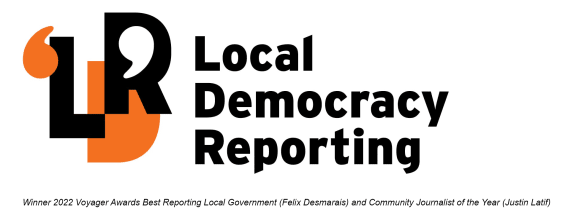
Norman Gray, clinical head of Wairarapa Hospital ED, says there are not enough resources to meet demand. Photo: Supplied / Wairarapa Times-Age
A senior doctor is warning Wairarapa Hospital is too small for the region's growing population.
The warning comes as new numbers show the hospital was operating close to capacity over the winter months, with occupancy at 94 percent during June.
Other winter months showed similarly high numbers with occupancy rates at 80 percent in July, 84 percent in August, and 89 percent in September.
The combined inpatient bed occupancy rate given is for the medical-surgical wards, high-dependency unit, and the paediatrics, rehabilitation and maternity wards.
The emergency department (ED) had also been under pressure. Only 66 percent of people were seen in the ED within six hours of arriving in June, 72 percent in July, 70 percent in August, and 59 percent in September.

Wairarapa Hospital ED clinical lead Norman Gray has previously said working conditions and staff shortages were impacting patient care.
"There's poorer outcomes for patients for sure," he said.
"There are not enough resources to meet demand."
Te Whatu Ora Wairarapa operations group director Kieran McCann said high occupancy rates in winter were not unusual and reduced over summer.
He acknowledged healthcare capacity issues were a challenge for Te Whatu Ora, but said the hospital was just one part of the system providing healthcare for patients.
Wairarapa Hospital consultant general surgeon Clare French said the region's growth meant many hospital facilities were often overstretched.
An ageing population meant patients frequently presented with complex medical problems.
"I think the population has outgrown the hospital considerably," she said.
"The actual space that we do have works for its purpose; the trouble is that there are just more patients than we have space for.
"In the ED, in the theatres, in the clinics, and of course on the wards we are always pressed to fit everyone in."

Wairarapa Hospital. (file image) Photo: Supplied
French said a business case had been submitted for an expansion of the endoscopy and theatre spaces to allow for more efficient throughput, fit-for-purpose facilities, and better ability to meet the local and regional needs.
Increasing patient numbers, especially older patients, meant an increased workload for everyone, from GPs through to rest homes, she said.
"You can feel it any time, there's a stress on the system, because the backlog builds up, or spills over to the ED or hospital."
French said staffing shortages combined with infrastructure challenges meant the environment was challenging.
"We are carrying on as best we can, but fundamentally there needs to be real expansion of infrastructure, and retention and hiring of staff, to make our hospital what it could be."
McCann said annual hospital occupancy had remained relatively stable over the past few years, with seasonal fluctuations.
"We are mindful that capacity in the Wairarapa is a system-wide challenge and that our hospital provides only one part of the overall patients care needs," he said.
"Our annual hospital occupancy has remained between 60-70 percent and ED presentations have also remained broadly similar in the last three years.
"The usual seasonal pressures will see these rates climb at peaks of winter activity and lessen off over summer months."
McCann acknowledged a steady rise in the hospital length of stay for acute and planned patients.
"This can be a result of not only the complexity of patients but the wider demands for care both inside and outside of a hospital setting.
"Planning for hospital capacity needs to consider the availability of treatment and services in the community such as aged residential care and primary care."
McCann said two senior doctors had recently been recruited.
"A further person, who is currently working through immigration processes, [is] due to start in January 2024. We also continue to engage with other potential applicants."
The occupancy and ED numbers provided by Te Whatu Ora have not yet undergone full quality assurance.
Local Democracy Reporting is Public Interest Journalism funded through NZ On Air




